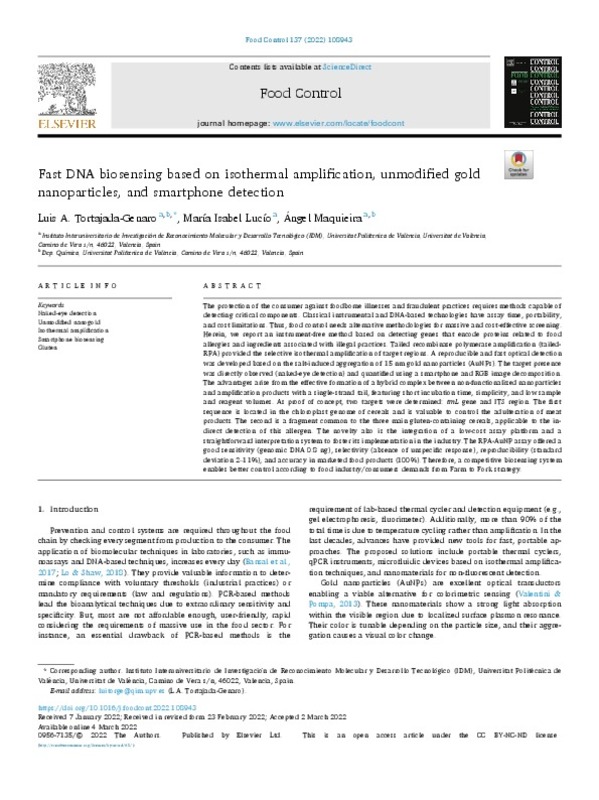JavaScript is disabled for your browser. Some features of this site may not work without it.
Buscar en RiuNet
Listar
Mi cuenta
Estadísticas
Ayuda RiuNet
Admin. UPV
Fast DNA biosensing based on isothermal amplification, unmodified gold nanoparticles, and smartphone detection
Mostrar el registro completo del ítem
Tortajada-Genaro, LA.; Lucío, MI.; Maquieira Catala, A. (2022). Fast DNA biosensing based on isothermal amplification, unmodified gold nanoparticles, and smartphone detection. Food Control. 137:1-10. https://doi.org/10.1016/j.foodcont.2022.108943
Por favor, use este identificador para citar o enlazar este ítem: http://hdl.handle.net/10251/182133
Ficheros en el ítem
Metadatos del ítem
| Título: | Fast DNA biosensing based on isothermal amplification, unmodified gold nanoparticles, and smartphone detection | |
| Autor: | ||
| Entidad UPV: |
|
|
| Fecha difusión: |
|
|
| Resumen: |
[EN] The protection of the consumer against foodborne illnesses and fraudulent practices requires methods capable of detecting critical components. Classical instrumental and DNA-based technologies have assay time, ...[+]
|
|
| Palabras clave: |
|
|
| Derechos de uso: | Reconocimiento - No comercial - Sin obra derivada (by-nc-nd) | |
| Fuente: |
|
|
| DOI: |
|
|
| Editorial: |
|
|
| Versión del editor: | https://doi.org/10.1016/j.foodcont.2022.108943 | |
| Código del Proyecto: |
|
|
| Agradecimientos: |
|
|
| Tipo: |
|









